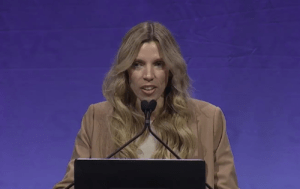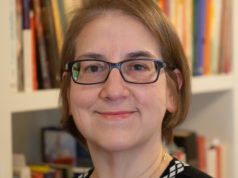
The addition of a diversity, equity and inclusion (DEI) editor at the Journal of Vascular Surgery (JVS) was found to be associated with more diversified publications and perspectives—including a significant increase in the number of women involved in the peer-review process—in a new analysis led by researchers from the University of Florida.
Results from the study were hailed by outgoing JVS group editor-in-chief Peter Gloviczki, MD, as a sign of the progress made at the Society for Vascular Surgery (SVS) journals since the DEI editor, Ulka Sachdev-Ost, MD, was appointed nearly two years ago—but also of the opportunity for further improvement in diversity, equity and inclusion that still remains. The DEI editorial role was created in the wake of the “Medbikini” controversy in which JVS published a since-retracted paper entitled “Prevalence of unprofessional social media content among young vascular surgeons.”
Findings from this new study, “The measurable impact of a diversity, equity and inclusion editor on diversifying content and perspectives represented in the Journal of Vascular Surgery (JVS),” were presented by M. Libby Weaver, MD, during the 2022 Vascular Annual Meeting (VAM) in Boston ( June 15–18). Weaver is a vascular fellow at the University of Florida School of Medicine in Gainesville, Florida, who is about to become a vascular surgeon at the University of Virginia.
Weaver and colleagues set out to measure the impact of Sachdev-Ost’s role on the presence of DEI topics and women authorship over a period stretching from a year prior to Sachdev-Ost’s appointment through May of this year. “Women and minorities remain underrepresented in academic vascular surgery, and this persists in the editorial peer-review process, and may contribute to publication bias,” she told VAM 2022.
Authorship and content examination were stratified into three periods: November 2019–October 2020, or the period prior to the creation of the DEI editor’s role; November 2020–October 2021, the period afterward; and September 2021–May 2022, a period incorporating the average 47-week lag time from submission to publication in JVS.
The researchers found that editorial, guideline, and non-primary research articles dedicated to DEI topics increased from zero before to four by May 2022. “The proportion of these articles on any topic with women as first or senior authors more than doubled from 24% to 53%,” said Weaver. Invited commentaries and discussions were “significantly increasingly” written by women as the study period progressed—from 19% to 40% (p=0.02).
“There were 56 research studies and systematic reviews on DEI-related topics published during the entire study period—the majority of which were patient-centered,” Weaver explained. “The proportion of research studies dedicated to DEI topics initially decreased but then significantly increased to 7% [5.4% pre; 3.1% post; p=0.04] when taking into consideration the lag in publication time for a total of 23 thus far in the nine-month lag period.”
Clinical research and systematic review manuscripts on DEI topics were nearly twice as likely to have women as first or senior authors (71.4%) compared to non-DEI specific manuscripts (37.5%; p<0.001), the investigators discovered. They also recorded an increase in the number of women reviewers from 31 of 191 (16.2%) to 51 of 245 (20.8%; p=0.22), and of women distinguished reviewers from three of 107 (2.8%) to 16 of 73 (21.9%; p<0.001).
“The addition of a DEI editor to the JVS is associated with diversification of publications and perspectives represented in the journal,” Weaver told VAM 2022 attendees. “Women in particular contribute significantly to the scientific literature focused on underrepresented patient populations and diversifying the vascular surgery workforce. There was also a significant increase in women invited to perform peer reviews during the study period. Ongoing efforts are necessary to continue to improve diversification of subject matter and perspective in the vascular surgery literature, and reduce publication bias.”
Commenting at the close of Weaver’s presentation, Gloviczki explained how the JVS leadership came to the decision two years ago to tackle the diversity issue by creating a dedicated editorial role. “This is a deficiency of the peer-review process and the editorial process at the journal, and we made, as you beautifully demonstrated, significant changes,” he said.
Yet women, he continued, remain just 15% of the JVS reviewer pool. “We have 706 reviewers of the JVS, and only 104 are women.” The number is twice as high as before 2020, but the journals “desperately” need more, Gloviczki said.
“We try to send every paper to a woman or underrepresented minority reviewer, but they are overwhelmed, and they cannot really be reviewers of all the papers.”
Elsewhere, Gilbert Upchurch Jr., MD, chair of the University of Florida Department of Surgery, asked whether Weaver and colleagues had detected impactful journals in the wider scientific literature “that actually blind to race and gender when sending reviews out” as a potential alternative to the paucity of female reviewers.
“I do know of a paper in the scientific literature—that is not specific to the surgical literature—that demonstrated that, when the assigning editors are women, they are more likely to assign peer reviews to women,” Weaver answered. “And the alternative is true, so I worry that it would actually potentially cause the opposite problem.”
Weaver suggested that a solution may lie in diversifying the editorial board as well as the contingent of assigning editors.
Session moderator Ellen Dillavou, MD, the medical director and division chief of vascular surgery at the WakeMed Hospital System in Raleigh, North Carolina, said the discussion offered an opportunity to encourage younger members of the vascular surgery community, or those who might not think they qualify, to sign up to review and help swell the ranks. “Proportionally, by age, we are a much more diverse group the younger we are,” Dillavou added.
Weaver pointed out that one of the qualifications needed to become a JVS reviewer is Board-eligibility, challenging the journals to take another look at this requirement. “I think that carefully selected trainees can provide very thoughtful reviews, and that might be a way to quickly diversify your pool and add to it a little bit.”











